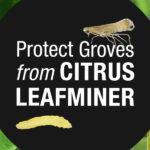Soybean Yield Competitions Generate Valuable Data
Data on best management practices collected from yield contests can help other growers.

Analyzing yield competition data can help growers uncover valuable insights on best management practices.
Many factors motivate farmers to achieve higher yields. Some growers want to fulfill their family’s legacy, while others aspire to stay profitable and reap the benefits of their hard work. But sometimes, good old-fashioned friendly competition is the incentive farmers need to produce higher-yielding soybeans.
Each year, the North Carolina Soybean Yield Contest gives participating growers the drive to earn top-producer bragging rights. It also provides fascinating data that can enable all soybean growers to boost their crops’ productivity.
Rachel Vann, Ph.D., assistant professor and soybean Extension specialist in the Department of Crop and Soil Sciences at North Carolina State University (NCSU), is one of the researchers gathering essential intel on soybean yield and a contest administrator. “Since we collect so much management information through the contest, we are able to identify trends that will benefit all growers,” she says.
Joining Vann as a longtime contest administrator is Jim Dunphy, Ph.D., retired Extension soybean expert and professor emeritus of soybean production & management at NCSU. This annual endeavor is a group effort with North Carolina Cooperative Extension Agents measuring yield contest entries at the local level and the North Carolina Soybean Producers Association (NCSPA) providing prizes for the winners.
Any grower in North Carolina with three or more contiguous acres of soybeans is eligible to enter the contest. There are several prize categories, and cash winnings range from $100 for a regional yield award to $1,000 for the top state champion.
When entering the contest, growers are asked to provide their production practices associated with the entered acres, which is the data Vann and her team use to help determine what best practices provide the highest yields.
The idea of using producer-derived data to leverage something already going on provides a broader educational value. Almost as valuable as seeing what works is understanding what doesn’t when it comes to strongly predicting high yield. By focusing on the most important variables, we can take a deeper dive into what truly impacts yields.
High Yield Predictors
Maximizing the value of contest data is an ongoing goal for Vann. “When I came to this position five years ago, we had a large database of information for reference,” she says. “But there had not been any effort to dive into that database to get what educational value could be gleaned for the broader grower base.”
Vann and her colleague, Katherine Drake-Stowe, now the director of the U.S. Soybean Research Collaborative, decided to undertake this challenge by reviewing 18 years of yield contest data from 877 entries.
“We wanted to identify those production practices that were strong and consistent predictors of high yield in North Carolina soybeans,” Vann says. “We looked at 12 to 15 management practices and conducted a statistical analysis to determine which practices had the strongest impact on yield.”
The most impactful practices noted in her team’s report are as follows:
- Maturity group. The contest data shows that planting an earlier-maturing variety (<MG5), especially in high-yielding environments, increases soybean yields. However, Vann advises against taking a blanket approach when selecting maturity groups because of North Carolina’s rotational complexity, soil type variability and inconsistent annual weather patterns, which oftentimes necessitate growers selecting a wide range of maturity groups. Nonetheless, using earlier maturing varieties optimizes yield in situations with optimal production capacity and limited stress.
- Foliar fungicides. The data clearly shows that the use of foliar fungicides can increase soybean yields because they reduce yield loss from diseases. At the beginning of the period in this analysis (around 2002) there was very little use of fungicides to control foliar disease in North Carolina soybean production. This information shows that foliar diseases need to be aggressively managed to prevent yield loss in North Carolina, and that can be done through selecting resistant varieties, scouting for foliar diseases and rotating fungicides with different chemical modes of action.
- Planting date. While the exact timing varies by region across the state, the contest data shows that earlier planting dates consistently increase soybean yields. “Our data verifies that planting earlier, before mid-May, is an important practice, particularly in high-yielding situations,” Vann says.
- Herbicide use. The data also shows that more frequent herbicide applications resulted in higher soybean yields. The report adds that a robust, “multifaceted approach to chemical weed management is often necessary to protect soybean yield.”
Vann states that while some production practices won’t be relevant to every farmer across the country, the data collection and subsequent evaluation may be something all can contemplate.
“The idea of using producer-derived data to leverage something already going on provides a broader educational value,” she says. “Almost as valuable as seeing what works is understanding what doesn’t when it comes to strongly predicting high yield. By focusing on the most important variables, we can take a deeper dive into what truly impacts yields.”
Additional Resources for Achieving High Yields
Check out these links for more information on the North Carolina Soybean Yield Contest and Vann’s research and data analysis.
Find out how increasing yields with the right crop protection input can maximize your return on investment — whether you grow corn, soybeans or both.
3 Min Read
- North Carolina Soybean Yield Contest honors high performers with prizes.
- The contest collects valuable management practice data.
- Data analysis shows a variety of factors that may lead to higher yields.























